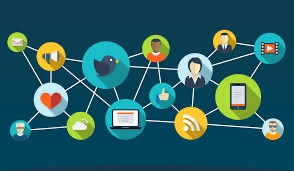This week’s readings and videos made me rethink the ideas I had about inclusion in education and in my PLN. Although I thought I understood what inclusion means and I practiced it daily, the idea of inclusion as “there is no other” has never come to my mind. I agree with Pugach et all that “There is a distinct gap between the silos of special education and curriculum (2001, 2007)” and to bridge that gap we need a completely different approach to education than before.

How diverse is your existing PLN?
My PLN is as diverse as my time and presence allows me on the different platforms. I’d like to think that being in many different groups benefits my teaching career and could expand my learning opportunities so I actively search and join teacher groups (local and worldwide) that I can learn from. I also enjoy following moms groups and some groups that personally interest me to learn from other’s experiences and share mine.
In your PLN, are you learning from a variety of voices or are you the loudest in the room?
I tend to be more of a listener and observer than sharer when it comes to my PLN, unless I feel very strong and/or confident about the topic. At times I like to ask for advice or I would share mine as I understand the difficulties of someone who is at the beginning of their career and it not only might be very helpful for someone, but also would make that person feel included in that community.
Do you participate in a silo of information sharing (similar themes or wide range of interests)?
When it comes to sharing resources and interacting with colleagues in my PLN, I am slowly opening up to widening my groups and interests that I feel could move my career ahead and could provide a learning opportunity. For example, by widening my Personal Learning Network, I am able to meet and interact with people who also have the same profession and same interest that will broaden my personal and profession network and might create future opportunities for collaboration and interaction.
How can you use a diverse PLN to broaden your views of inclusion?
A couple years ago I attended a virtual workshop on Afro-Latino Communities because I wanted to learn about the diverse Latino communities all over the world. This workshop was an excellent opportunity to demystify some of the concepts and ideas I had previously from an authentic perspective. As teaching culture through music in my classes plays an important part, it also helped me to understand the messages some of these communities are trying to convey through music.
In your professional setting of choice, do you think inclusion is actively embraced?
Although inclusion in education is actively embraced and practiced in schools, my experience is that it still has a long way to come which requires a lot of support, patience and a different way of thinking about inclusion. The increasing number of students “not fitting in” and the lack of support and resources are good indicators of how changes still need to come.
What is the learning outcome of your PLN and how are you ensuring your exposure to diversity and inclusion?
As my PLN is quite diverse already, my interest, hobbies and professional learning dictate the exposure to other networks and while I could be active in one group for a while, I might switch to another group and interact more there for more learning opportunities. At times, it is our responsibility to educate ourselves about certain topics, like the Truth of Reconciliation, in order to serve our students better and be well informed about our practices.
How has your thinking about inclusion and PLN evolved after reviewing the videos and readings?
While I was familiar before with what inclusive education means, the videos and readings broadened my views and made me reflect on my learning as a student. As educators we encourage our students for lifelong learning, I think we should also look at our career as a learning journey and always be open to listen to other perspectives without prejudice.
Shelley Moore and Leyton Schnellert: One Without the Other: Stories of Unity Through Diversity and Inclusion. 2017. pg.6-12.
October 20, 2021 at 3:53 pm
Thanks for sharing this post! I relate to you in that i am much more of a listener and observer than a sharer. I typically just listen and reflect on other’s opinions, unless it is something i feel very passionate about.